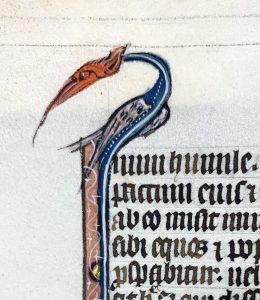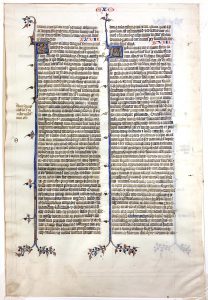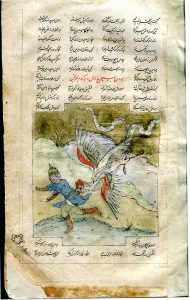Another Latin Bible Manuscript Leaf
in the Collection of Birgitt G. Lopez
Single Leaf from a Latin Vulgate Bible
Folio “74[?]” with Part of the Book of Daniel
Daniel 9:11 ([. . . et declinaverunt / ] ne audirent)
– 11:30 (et cogitabit [ / advesum eos . . . ])
Double Columns of 56 lines
Written in Gothic Script
with Running Titles, Initials, Pen-flourishes, and Annotations
including a Modern Folio Number

Collection of Birgitt G. Lopez, Vulgate Bible Manuscript Leaf purchased in London around 2000: Recto with opening of Daniel Chapter X.
[Posted on 17 May 2022]

Collection of Birgitt G. Lopez, Framed Leaf from ‘Otto Ege Manuscript 20’, Front-Facing Page (“Recto”).

Collection of Birgitt G. Lopez, Framed Leaf from ‘Otto Ege Manuscript 14’.
Following our blogpost reporting Two Ege Manuscript Leaves and Two Ege Labels in the Collection of Birgitt G. Lopez, we learn of another leaf in the same collection, with a different provenance. Those two Ege leaves and labels pertain to three manuscripts dismembered and distributed by Otto F. Ege (1888–1951). That is,
- with a leaf from “Otto Ege Manuscript 14” and its Ege Label,
- an Ege Label from “Ege Manuscript 54”, and
- a leaf from “Ege Manuscript 20”.
They all pertain to books of the Latin Vulgate Bible, either as full Bibles in large or small format, or as the Book of Psalms in a separate volume (or Psalter) in small format. They came to their collector in stages, by purchase at auction at the Dallas Public Library in 1998, or as a gift in 2003 from its former Librarian, Lillian Moore Bradshaw (1915–2010), with a mix-up at some stage between labels and leaves.
 Collection of Birgitt G. Lopez, Otto Ege Label for “Ege Manuscript 54”.
Collection of Birgitt G. Lopez, Otto Ege Label for “Ege Manuscript 54”.
The Next Leaf
The next leaf reaching our attention came from a small-format Vulgate Bible manuscript. In correspondence, Ernesto Lopez reports that he purchased the leaf in London, England, around the year 2000.
The unframed leaf and its seller’s label tell the story of a pattern of transmission of a dismembered medieval manuscript leaf which, at some stage in transmission after dismemberment, lost a record of connection to the original book. Here we examine the label and both sides of the leaf, as revealed in the collector’s photographs, generously supplied for study and for presentation here to a wider world.
The Seller’s Label
With the leaf is a folded rectangular paper label with printed or print-out text in two halves above and below the fold-line which would permit the label to stand upright, say in a case or on a shelf. The upper half of the sheet, above the fold line, identifies the seller, the Parthenon Gallery in London, purveyor of “Ancient coins, antiquities & fossils”. This gallery is still located in the same place, at 25, Bury Place, WC1A 2JH.

Within a rectangular frame, the lower half of the label calls the specimen “Early Medieval”. Details cite the item as comprising “Illuminated manuscript pages [sic] from an early medieval bible written on vellum, with Latin written in a miniscule hand”; identifies the contents as part of the text of “I Machabees, relating the episode of “The Temple taken”; and dates the item to “Circa 1280 A.D. Not after 1300.”
At the bottom of the frame, at the left, there stands the printed identifier “9037 R 0”, in arabic-numbers-plus-letters (or-letter). At the right, layered pieces of gauze tape cover the price identifier, which is partly visible in show-through, beginning with the currency-identifier for pounds sterling (£).
The Leaf
Side 1
To begin with, we saw a photograph of only one side. The cropped edges of the photograph do not offer indications of which side of the leaf it is, whether recto or verso. We decided to examine the image for what it might show.

The Text
Despite the label, this leaf does not belong to any part of the First Book of Maccabees (I Maccabees). Instead it has part of the text in the Book of Daniel.
The text on the page starts within Daniel 10:14 ([ . . . sunt populo / ] tuo in novissimis diebus, quoniam adhuc visio in dies). The page ends in the middle of 11:30 (et faciet: reverteturque, et cogitabit [ / advesum eos . . . ]).
The enlarged initial signals the beginning of Chapter 11:1, which reads: Ego autem ab anno primo Darii Medi stabam ut confortaretur et roboraretur. Rendered in blue pigment, the initial E stands outside the column of text. Above and below the letter extend pen-flourishes in red pigment, which reach most of the height of the column. In places, the flourishes form the outlines of foliate motifs, sometimes branching, with rippled contours in some places.
Show-through from the opposite side of the leaf indicates that a similar enlarged chapter-initial, with pen-flourishes, stands in the intercolumn, pertaining to a place in column b, about one-quarter of the way down its course. Chapter 12 would begin with an initial I: In tempore autem . . . Chapter 10 would begin with an initial A: Anno tertio Cyri regis Persarum . . . On the strength of those different letter-forms, it is tempting to guess that that opposite side of the leaf carries the last part of Chapter 9 and the first part of Chapter 10.
Even the running title points to the Book of Daniel. Centered at the top of the page , the bichrome red-and-blue capital letters designate the first part of the name: “DANI-“. Given the orientation, this portion of a bi-partite title on a verso would be complemented by the second portion on the formerly facing recto of the next leaf in the book.
An addition in ink in the left margin supplies a missing word confortare, with a signe-de-renvoi linking it with its place in the text, within Daniel 10:19
et dixit: Noli timere, vir desideriorum: pax tibi: confortare, et esto robustus. Cumque loqueretur mecum, convalui, et dixi: Loquere, domine mi, quia confortasti me.
The signes-de-renvoi take the form of an identical pair of triple dots in triangular formation in red pigment. One twin stands at the upper left of the correction. The other hovers in the interline at the place within the column of text where the insertion is to be supplied. A wash of red pigment enhances the bow of the somewhat enlarged letter c, like various minor text initials in the columns of text.
At first, when I examined the photograph of this page, some features, including forms of the pen-flourishing, reminded me especially of a couple of Vulgate Bible manuscripts dismembered by Otto Ege and distributed in more than one of his several Portfolios of specimen leaves from manuscripts and printed books.
The pair of manuscripts , which I come on occasion to think of as “Otto Ege Manuscript 9 + Manuscript 54”, featured in my recent blogpost exploring the Two Ege Manuscript Leaves and Two Ege Labels in the Collection of Birgitt G. Lopez. Their numbers derive from the different positions of cataloguing the two manuscripts in Scott Gwara’s Handlist of Ege’s Manuscripts. They figure on the one hand as its Handlist Number 9 (for its position among the numbered specimens in the Fifty Original Leaves Portfolio, or FOL) on the one hand; and, on the other, as its Handlist Number 54 (for both versions of the Original Leaves from Famous Books Portfolio, respectively in Eight and Nine Centuries, or FBEC and FBNC). For citations, please see that earlier blogpost.
The overlap or perhaps sometimes confusion between the two manuscripts results from the distribution of their respective specimens sometimes in FOL and sometimes in the versions of Famous Books
levitra usa
, as substitutions might arise in the course of assembling individual sets of one or other Portfolio. For example, the manuscript normally deployed for Number 9 in FOL sometimes did service in FBEC or FBNC. The other manuscript sometimes or normally deployed instead for FBEC (as Leaf 1) or FBNC (as Leaf 2), has Gwara’s assigned Number 54.
If this seems complicated, welcome to the world of Ege Manuscript Studies! Fortunately, careful and precise examination of the individual cases can aid the process by bringing a strong dose of recognition of their specific characteristics.
Ege’s Labels for these two manuscripts, curiously interlinked or intermixed in Ege’s distribution patterns, identify them differently as
- a Bible written written in France, specifically Paris, in the middle of the XIIIth Century (FOL), or
- a Bible written by Dominicans in Paris circa 1240 (FBNC)
— as seen above, in one of the Ege Labels in the Collection of Birgitt G. Lopez.
For the two books Gwara prefers an attribution of “France, ca. 1250” (No. 9 for FOL and FBEC); and “Northern France, ca. 1250” (No. 54 for FBEC and FBNC), with cross-references between both numbers. Gwara’s list notes different numbers of lines for those two items, with script in double columns respectively of “53 lines” and “57 lines”.
The variation in numbers of lines per column and page in a single volume with closely-spaced text is not unaccustomed in small-format Vulgate Bible manuscripts of the period, so that the span of 56 lines on the Lopez Leaf under examination here, like some stylistic variations in script and pen-flourishes, need not in themselves rule out a possible association or connection with that Ege manuscript.
The point is that the general resemblance only, without closer inspection, brings to mind rather similar manuscripts from Ege’s collection whose features I have been recently been surveying, in the quest to sort out the partly divergent evidence of the Ege Labels and Leaves with a Dallas Public Library in the Collection of Birgitt G. Lopez.
More information comes to light on the other side of the leaf from London.
Side 2
Next, upon request, we could see the other side, revealing the full expanse of the leaf, insofar as it survives, and with a scale to indicate size.

Collection of Birgitt G. Lopez, Vulgate Bible Manuscript Leaf purchased in London around 2000: Recto with Scale.
This page shows some tell-tale features pertaining to the structure, location, and forms of use of the leaf within its former book. They include annotations which provide medieval references in ink in the outer margin and a modern folio number in pencil at the bottom right. The edge of the gutter, or stitching line, remains at the right-hand contour, while the wider expanse of the outer margin on the opposite edge appears to represent its full original extent.
In that outer margin stand the blue Chapter numeral X; a mark designating the roman numeral lvii or lxii (“lvij” or “xlij”) opposite line 4 of the text; an abbreviated mark awaiting decipherment to its right; a vertical set of three marks at intervals down the page, in the form of triple dots in triangular formation atop a leftwards-curving tail (let’s cite it here as “;”); and the arabic numeral 74, 75, or 76[?] in the lower outer corner.
At the top of the page stands part of of a bipartite running title in bichrome Gothic Capitals, forming the second half of the name for the Biblical Book of [DANI-/]EL.
Evidently, this side of the leaf is the original recto.
 Collection of Birgitt G. Lopez, Vulgate Bible Manuscript Leaf purchased in London around 2000: Recto.
Collection of Birgitt G. Lopez, Vulgate Bible Manuscript Leaf purchased in London around 2000: Recto.
The text begins within Daniel 9:11.
[11 Et omnis Israël prævaricati sunt legem tuam, et declinaverunt / ] ne audirent vocem tuam: et stillavit super nos maledictio et detestatio quæ scripta est in libro Moysi servi Dei, quia peccavimus ei.
The marks opposite line 4 in the outer margin, lvij or lxij, plus a larger abbreviation to its right, might signal the passage for reading. The ‘;’ markings at intervals opposite more lines lower down might be related to the readings from Daniel for the 21-day fast. See:
The listed readings in that resource do not exactly line up with this version, but it is the closest which we have found so far.
*****
Further research might identify which Vulgate Bible manuscript gave this specimen, somehow to reach the antiquary shop in London. As yet, it is unclear by which time and where the leaf acquired its modern folio number within the original volume, became separated from the book, and acquired its inventory number, selling price, and label, giving an attribution to a different text, and a particular passage, from a different Biblical Book in the Old Testament. We might assume, say, given the plural “pages” in the label, that its text was drafted to identify a group of specimens from the specific manuscript, laid out in an array from which a purchase might be selected. From them one, but not this one, could correspond to the specified passage about the Temple in I Macabees.
Perhaps the formula which the label assigns to the date-range of the specimen, like the citation of “I Machabees”, will provide a clue to its former location in a source-manuscript, according with a form of identification not unlike some employed by, say, Otto Ege, in labeling the dismembered pieces for distribution and perhaps offering a selling-point. For now, we might begin to look for Vulgate Bible specimens in double columns of around 56 lines, with comparable dimensions, and with corresponding folio numbers, all of which are identified as dating from “Circa 1280 A.D. Not after 1300.”
The modern folio number points to a different manuscript than the one which first came to mind when I saw a photograph from its “first side”, perhaps probably because that manuscript was fresh in mind. Some Ege manuscripts have modern folio numbers, entered before the books were taken to pieces. (See, for example, More Leaves from “Otto Ege Manuscript 51”.) But not, apparently, any leaves from Ege MS 9 or MS 54. The quest is open.
I invite your advice.
*****
Do you know of more leaves from this manuscript? Do you recognize the hands of these scribes, artists, and annotators in other parts of this book or in other manuscripts?
You might reach us via Contact Us or our Facebook Page. Comments here are welcome too. We look forward to hearing from you.
Watch our blog on Manuscript Studies for more discoveries. Please visit its Contents List.
*****

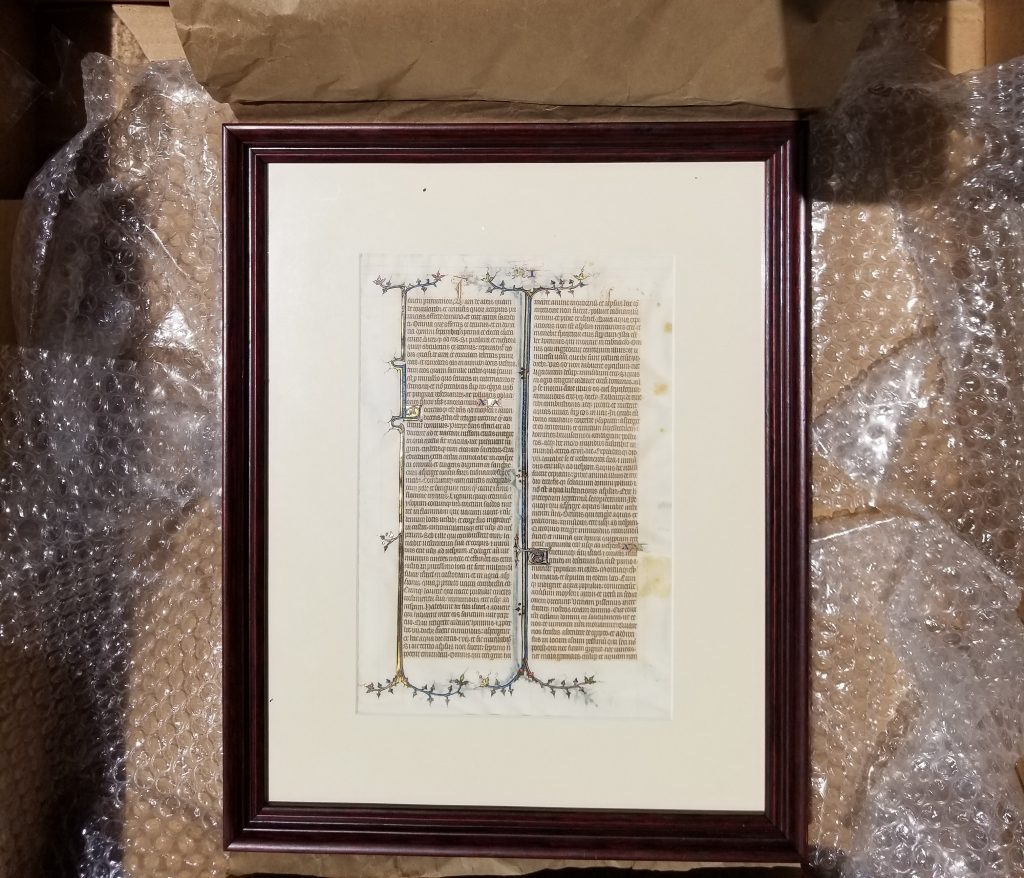
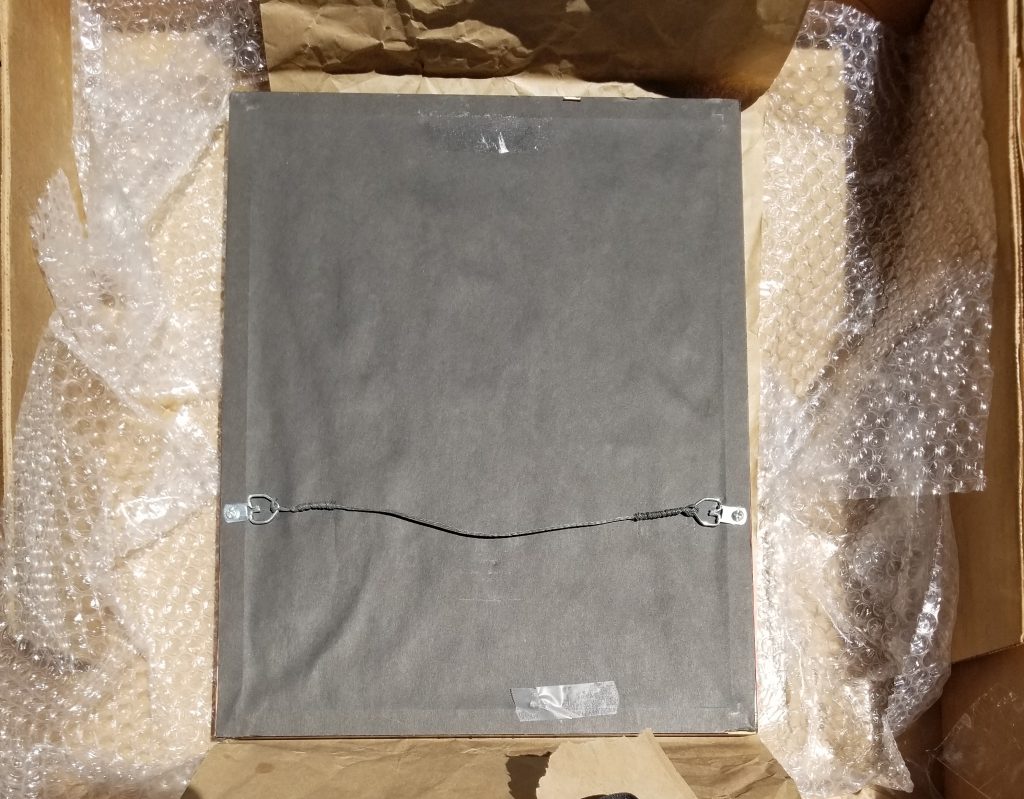
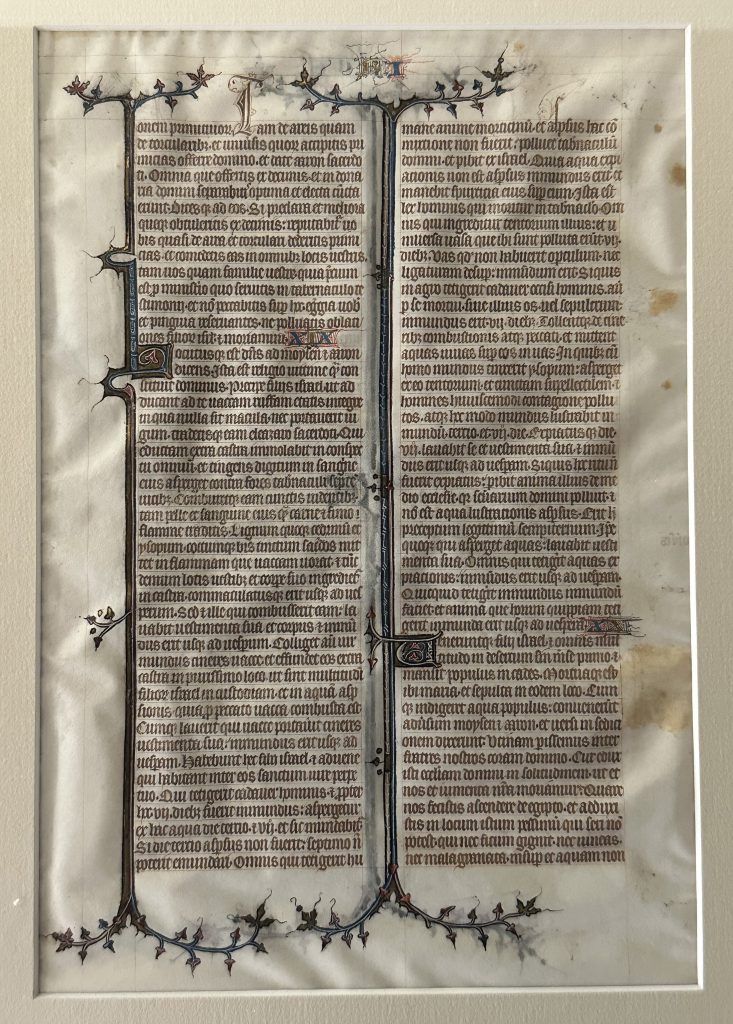

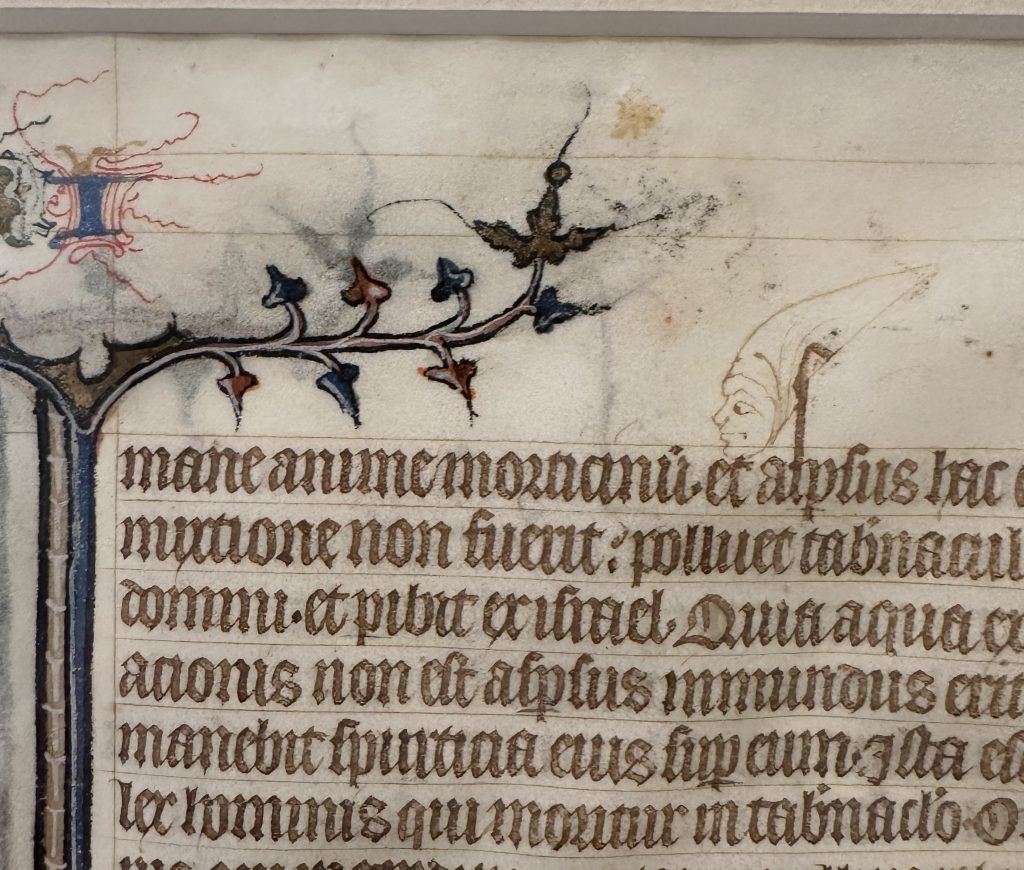



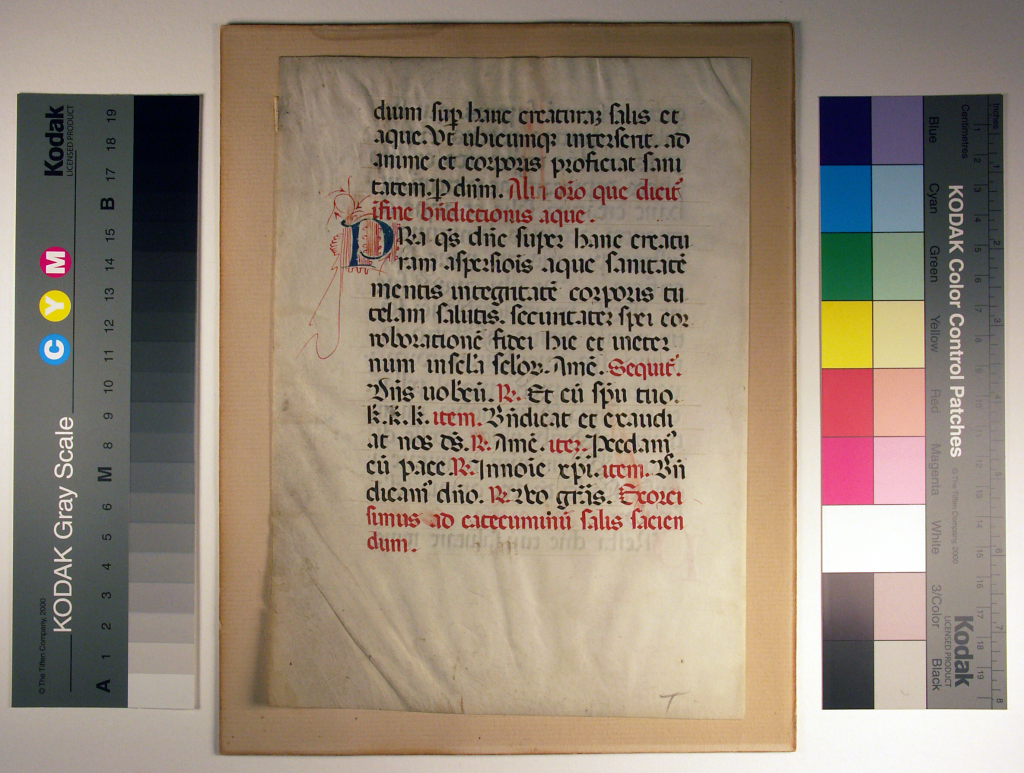
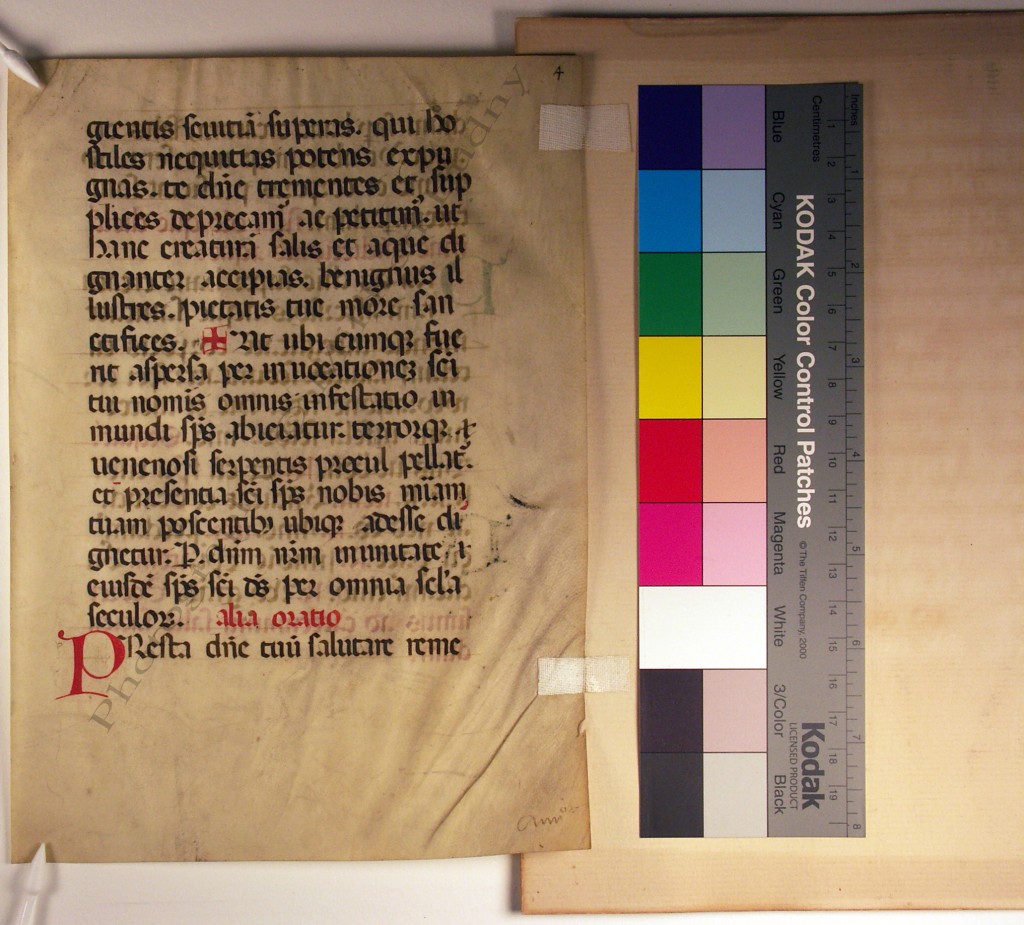


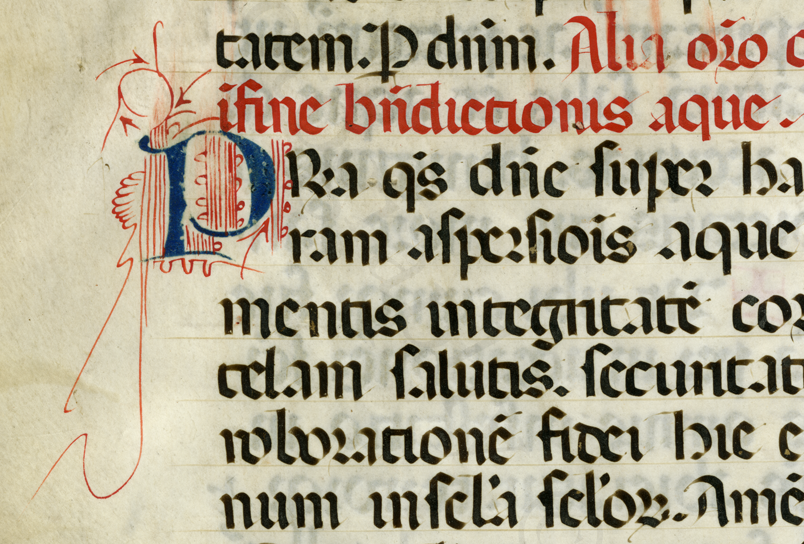



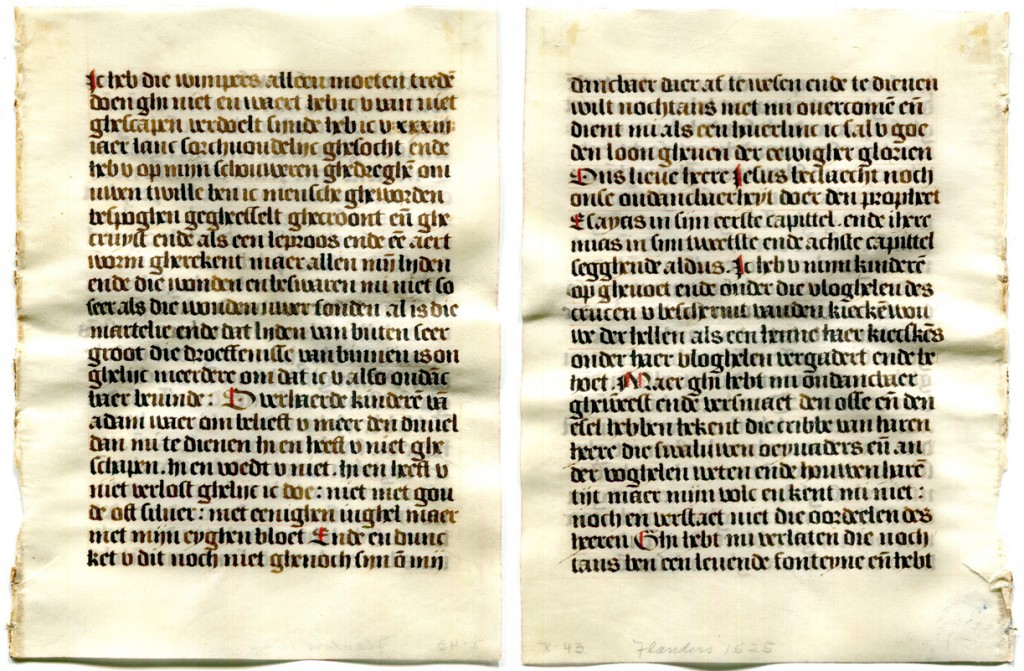 , owned and dismembered by Otto F. Ege” width=”1024″ height=”671″ /> Private Collection. Detached Leaf from ‘Otto Ege Manuscript 214’ (Dutch Prayerbook), Both Sides of the Leaf
, owned and dismembered by Otto F. Ege” width=”1024″ height=”671″ /> Private Collection. Detached Leaf from ‘Otto Ege Manuscript 214’ (Dutch Prayerbook), Both Sides of the Leaf


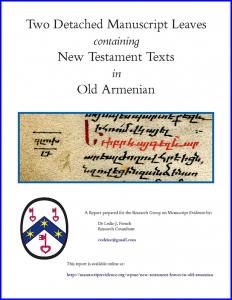



 Collection of Birgitt G. Lopez, Otto Ege Label for “Ege Manuscript 54”.
Collection of Birgitt G. Lopez, Otto Ege Label for “Ege Manuscript 54”.


 Collection of Birgitt G. Lopez, Vulgate Bible Manuscript Leaf purchased in London around 2000: Recto.
Collection of Birgitt G. Lopez, Vulgate Bible Manuscript Leaf purchased in London around 2000: Recto.